Ants or Bugs Getting Into Kitchen Cabinets and Containers
Here's How to Get Rid of the Most Common Pantry Pests
Pantry pests are exactly what they sound like: pesky little bugs that like to set up camp where you store your food. Here's a guide to America's peskiest, plus how to send them packing.
Every editorial product is independently selected, though we may be compensated or receive an affiliate commission if you buy something through our links. Ratings and prices are accurate and items are in stock as of time of publication.
1 / 9
 Viatkins/Shutterstock
Viatkins/Shutterstock
Know Your Pantry Pests
"Pantry pests" are insects that tend to gather around (and in) food stored in pantries and cabinets, such as flour, cereal, rice and crackers, according to the National Pest Management Association. Icky, yes, but it's not necessarily your fault since some of these pests often hitch a ride home from the grocery store—right in your food—and don't care if your kitchen (or garage) clean or not. Here's the lowdown on the most common pantry pests and how to get rid of bugs in your pantry that bug you.
2 / 9
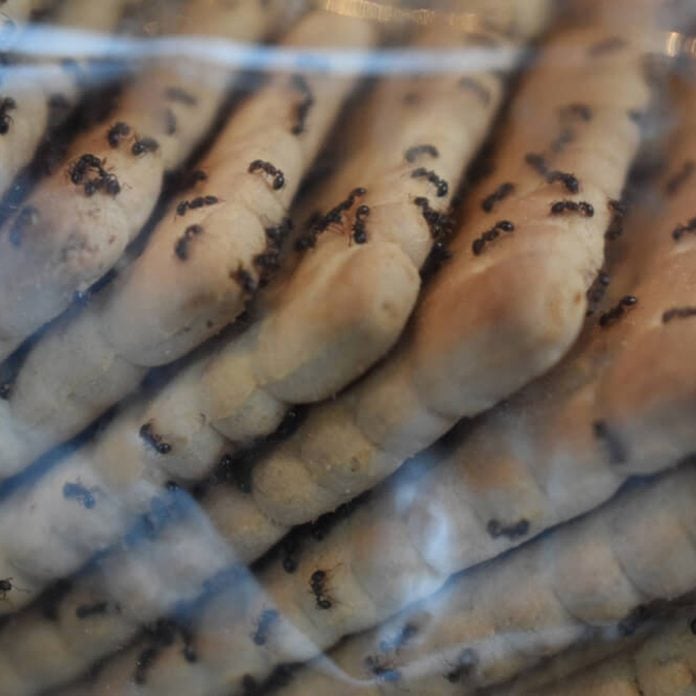 NivCube/Shutterstock
NivCube/Shutterstock
Ants
Ants are one of the most common kitchen nuisances, perhaps because they live in large groups and enter through doors and windows. If you spot an ant don't be surprised if you do need to call an exterminator, according to the pest control company Terminix, infestations happen fast and are difficult to control, and the way to get rid of ants depends on the species, and while you know ants by sight, you don't necessarily know the species (there are around 700).
How to get rid of ants: Keep your home sealed properly and try non-toxic deterrents like talcum powder, bay leaves and salt and pepper at suspected entry points.
3 / 9
 PHOTO FUN/Shutterstock
PHOTO FUN/Shutterstock
Indian Meal Moths
The Indian meal moth is one of the most commonly reported pests of stored grains in the United States. This is probably because their favorite foods include exactly the sort of things you store in your pantry: grains, grain products, dried fruits, nuts, cereals, and a variety of processed food products. You'll recognize these critters by their forewings, which are reddish-brown with a copper luster.
How to get rid of Indian meal moths: Like most pantry pests, IMMs are tiny enough to burrow through mesh and to slide through tiny gaps in bags. Be sure to store flour the right way in airtight containers, like these.
4 / 9
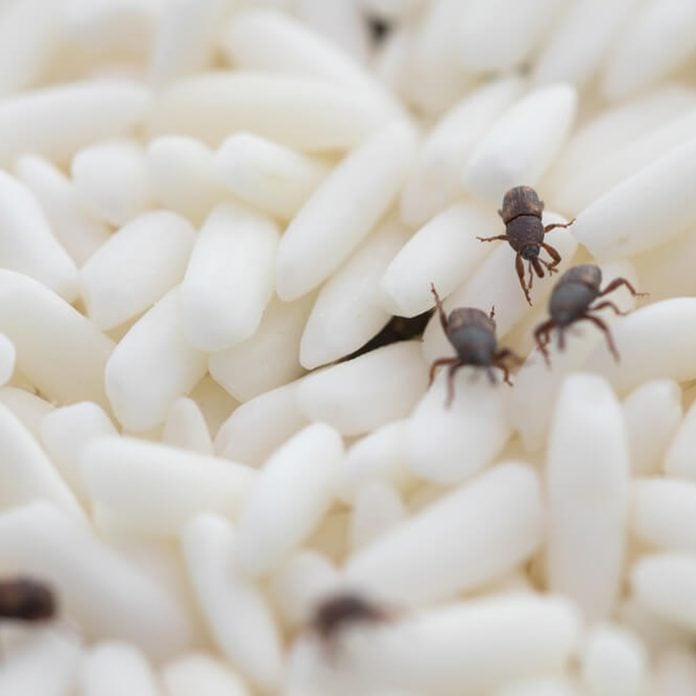 frank60/Shutterstock
frank60/Shutterstock
Grain Weevils
Grain weevils (also known as granary or wheat weevils) don't feed on processed food products but rather, prefer whole grains, beans, and seeds. They're small, reddish-brown beetles with an elongated snout. Since they can chew right through paper and plastic packaging, so you'll want to store your whole grains, beans, and seeds in airtight glass, plastic, or metal containers.
How to get rid of grain weevils: Small bags of black pepper have been known to repel weevils and washing your produce properly can also go a long way toward keeping unwanted critters out of the kitchen.
5 / 9
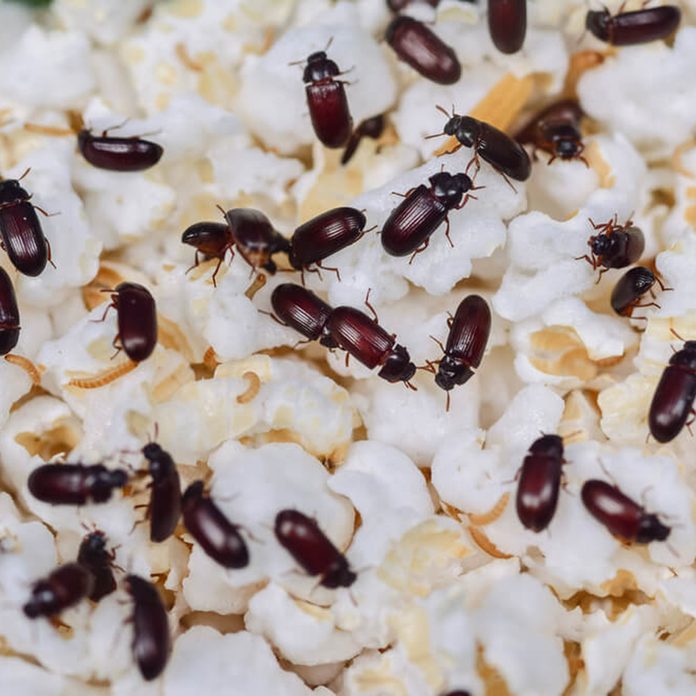 Chaikom/Shutterstock
Chaikom/Shutterstock
Flour Beetles
Two of the most common flour beetles are the "Confused Flour Beetle" and the "Red Flour Beetle," according to experts at Orkin. But because they measure in at less than 5mm long, you won't be able to tell the difference. Just know that they're tiny and reddish-brown, and they congregate and reproduce in flour, cereal, and dry pet food. Small as they are, as they eat, these beetles can cause flour to discolor and develop a disagreeable odor.
How to get rid of flour beetles: Keep your flour in a tightly sealed glass, metal or sturdy plastic container (not the original paper packaging). Or use these tips to keep bugs out of your kitchen for good.
6 / 9
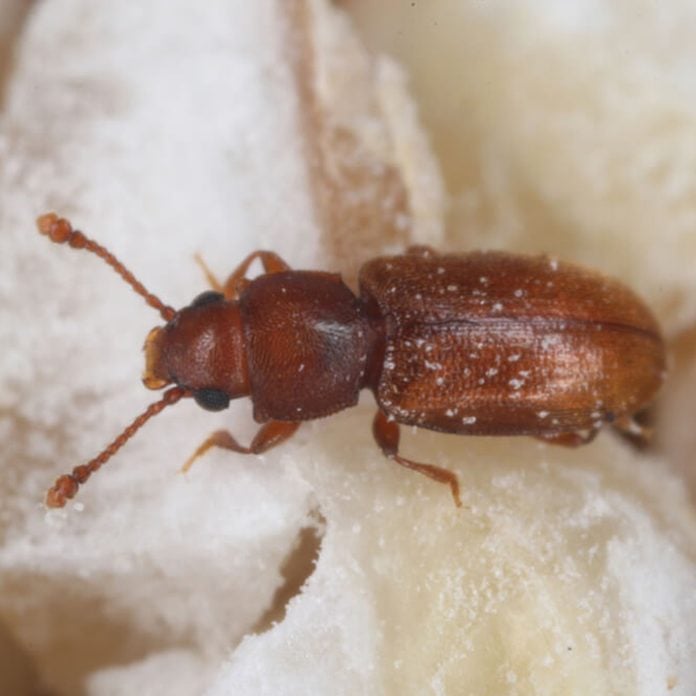 Tomasz Klejdysz/Shutterstock
Tomasz Klejdysz/Shutterstock
Merchant grain beetles
Merchant grain beetles are typically not found in grain products, but instead like to attack cereals, cake mixes, macaroni, cookies and chocolate. They're dark brown and have six saw-like teeth on each side of their bodies, which measure up to 1/8-inch long.
How to get rid of merchant grain beetles: To deter them, add one bay leaf to canisters and packages of dry goods, as the pungent aroma repels these pests.
7 / 9
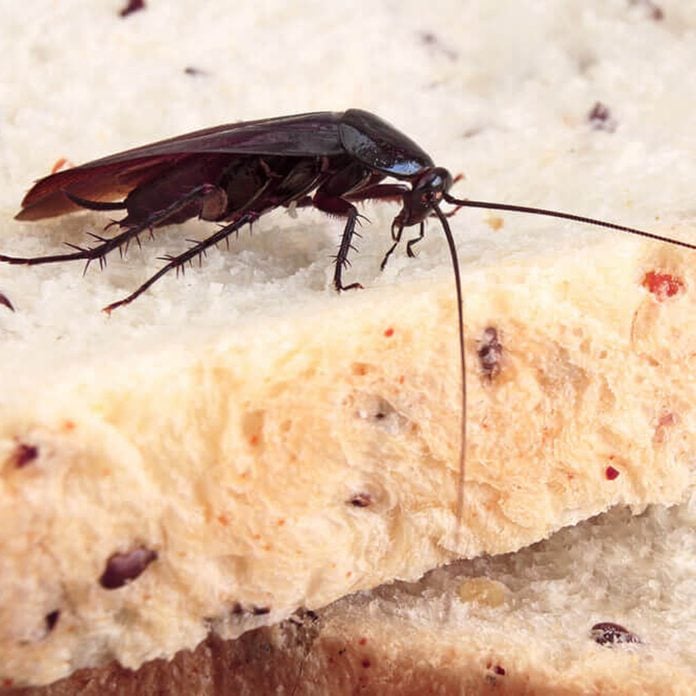 Barnaby Chambers/Shutterstock
Barnaby Chambers/Shutterstock
Cockroaches
Cockroaches are "accomplished hitchhikers," according to Terminix. "Cockroaches usually first get into buildings by riding in boxes, in furniture and in other items brought into the building. Most other cockroach species invade from the outside or from sewers or drains." Once inside, they follow water pipes and electrical lines through walls from one room to another (and from home to home in multiple-dwelling buildings). Because they love to hang out on wood surfaces, they may gravitate toward your pantry and other cabinets.
How to get rid of cockroaches: If you see cockroaches in a cabinet, immediately empty the cabinet of food because this puts stress on the cockroach population, making extermination easier.
8 / 9
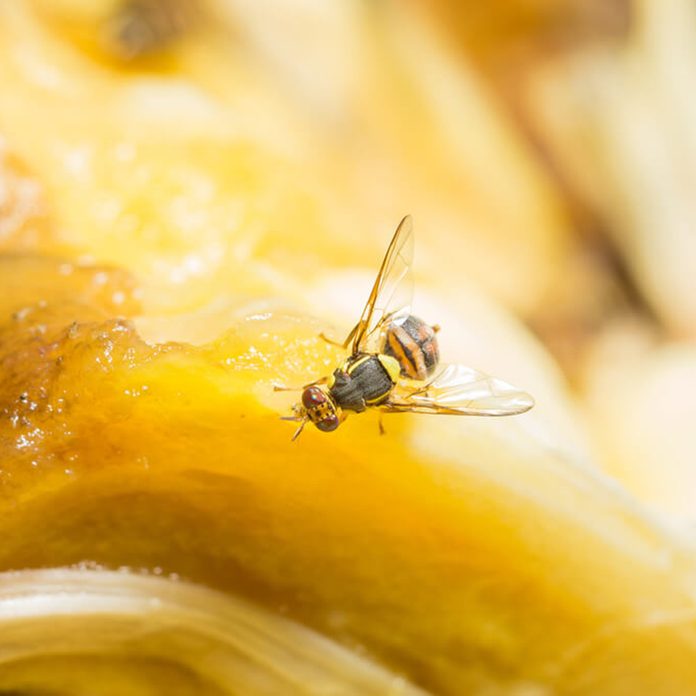 somyot pattana/Shutterstock
somyot pattana/Shutterstock
Fruit Flies
Fruit flies are tiny insects that love to feed on ripe or rotting fruits and vegetables, as well as other food that's in the process of decaying or fermenting (think anything with sugar that's been sitting out on your counter). These little pests reproduce quickly and can hitch a ride in grocery bags or from eggs laid in less-than-fresh food brought home from a grocery store.
How to get rid of fruit flies: Some non-toxic fruit-fly kryptonite includes vinegar, salt, pepper and wine. You can build a DIY fruit fly trap with these ingredients, a jar and some plastic wrap.
9 / 9
 Andrey_Popov/Shutterstock
Andrey_Popov/Shutterstock
Additional Pantry Pest Tips
Inspect your dry goods immediately upon purchase and before you bring them into the house and buy grains in small quantities at the store. Be sure to regularly clean (and inspect) your pantry and cupboards. And if you find an infestation, contact a licensed pest professional, pronto.
Originally Published: September 08, 2020
Sign up for recipes
to your inbox
Recipes from real home cooks, tested in our kitchens and delivered right to your inbox!

Subscribe & SAVE Save Up To 80%!
Ants or Bugs Getting Into Kitchen Cabinets and Containers
Source: https://www.tasteofhome.com/collection/how-to-get-rid-of-bugs-in-your-pantry/